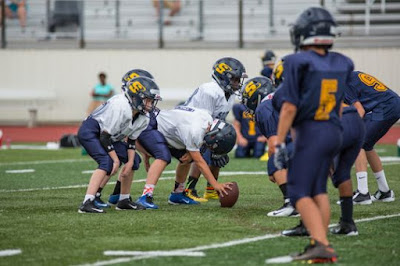Unfair play: Insurance costs are making football, other sports, prohibitively expensive
A disturbing trend of insurance costs making football prohibitively expensive continues to grow, following the path of other organized youth.
Americans just witnessed a historic
Super Bowl, but I can’t help but wonder whether football as a sport will
soon be history. A disturbing trend of insurance costs making football prohibitively expensive continues
to grow, following the path of many other organized youth sports. One
of the most troubling consequences, intended or unintended, is the
pricing out of the youth players who need team sports the most.
As
someone who grew up in a household below the poverty line, and whose
father didn’t finish high school, I didn’t even have cleats my first
year of high school football. Had the other equipment not been provided,
I would never have been able to afford to play at all. Similarly, I
never had cleats growing up playing baseball. If the bats and helmets
were not provided, and the uniforms not sponsored by a local business, I
would’ve again been forced to watch from the stands.
Football, like many other sports with low-cost entry barriers, has traditionally been the great class equalizer, providing opportunities for all kids to be physically active and to the learn the value of team work, perseverance, sportsmanhip, leadership and many other positive character traits. Physically active children, according to the Aspen Institute, are not only healthier and less likely to be obese, they also have better test scores, are more likely to go to college, and grow up to earn more than inactive children. Indeed, it’s estimated that nearly 95 percent of CEOs of Fortune 500 companies played sports. I have no doubt the hard work and perseverance I learned playing sports helped me succeed as a first-generation college student.
Insurance costs are becoming barriers to entry
The
expanding list of lawsuits against nearly every sport governing body is
making insurance underwriters skittish to provide coverage for many
sports, not just football. If they do decide to provide insurance, they
may require additional costly riders or exclusions for concussions or
other neurologic trauma. These costs are then passed on to the parents
who pay for the insurance premiums through their sport registration fees
or out-of-pocket at the time of injury.
This
trend will simply increase an already exclusionary youth sport
environment, where those children whose parents can afford to pay for
them to play will continue to do so, but the children whose parents are
in desperate socioeconomic conditions will be priced out of youth
sports. These same children are also most at risk of
obesity, trouble with the criminal justice system, and poor academic
achievement, among many other negative health and social outcomes.
What’s more, in the United States, where minorities are disproportionately living in poverty,
class discrimination also contains a racial element. If impoverished
youths are priced out of participation in team sports, minorities will
be disproportionately affected, widening not only socioeconomic gaps but
racial gaps. If nervous insurance companies have their way, those kids
and teenagers who have the most to benefit from participating in youth
sports will miss out on the game’s invaluable benefits.
Good coach education can make sports safer
Instead,
all stakeholders, insurance companies included, should be working to
make youth sports as accessible as possible and safer through coach education.
In fact, poor coach education is a rampant problem
in youth sports in general, with recent data indicating that just 36
percent of coaches have general safety and injury prevention training
and that only 29 percent of coaches have training in concussion
management. Additionally, only 35 percent of coaches have training in
sports skills and tactics for the sport they coach.
This
type of training is particularly important in football, where teaching
players the correct way to tackle plays a key role in safety and injury
prevention.
Improving coaching education would be a key way to limit injuries and make the sport more palatable to insurance companies.
Prohibiting
participation in sports whose benefits far outweigh the possible
potential harms is not the answer. Increasing access to safe, regulated
leagues with well-trained and educated coaches will make the game safer
and allow kids across all socioeconomic strata to reap the benefits.
Do you want to know more information about the health insurance in pa then please contact us in the comment section and send your queries.




Comments
Post a Comment